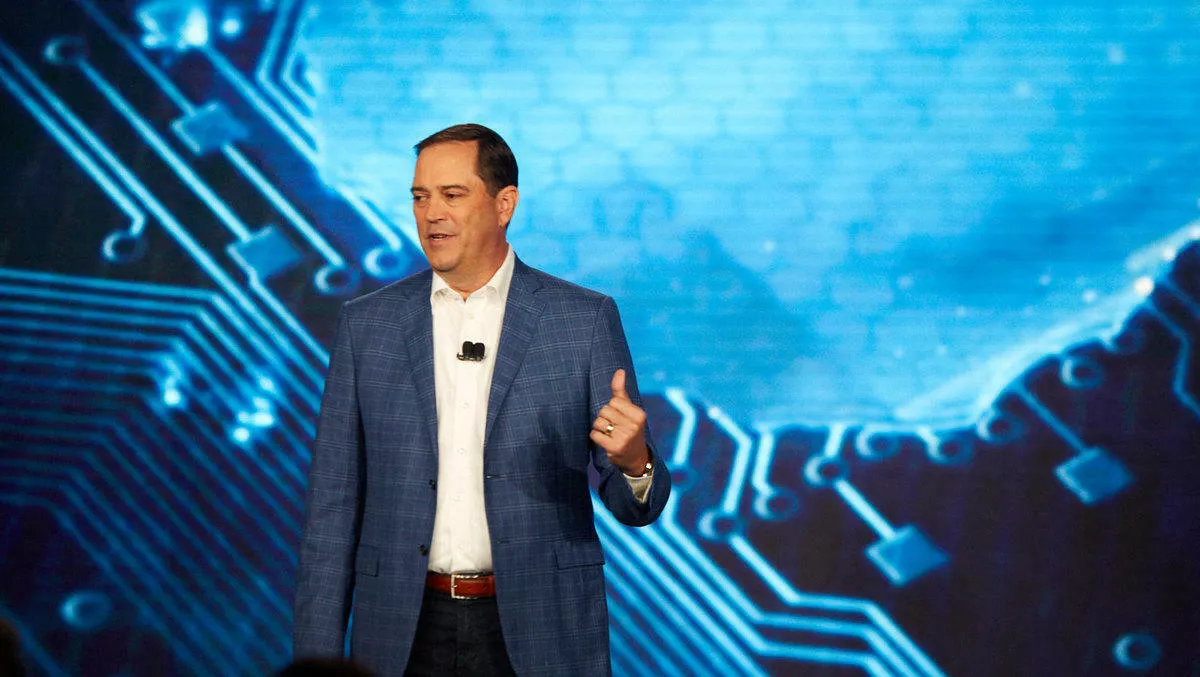
Cisco heralds silicon & optics as core of 'next decade of digital innovation'
Cisco has a plan for the next decade of digital innovation, and it all starts with pushing innovation beyond the boundaries of what's currently possible.
This week the company announced its 'internet for the future' strategy, which outline four key areas in which it will invest to achieve its goals.
Those areas focus on silicon and optics as the building blocks to support the next generation of technologies such as artificial intelligence, 5G, 10G, 16K streaming, quantum computing, adaptive and predictive cybersecurity, and other technologies that have not been invented yet.
Cisco chairman and CEO Chuck Robbins comments, "We are dedicated to transforming the industry to build a new internet for the 5G era. Our latest solutions in silicon, optics and software represent the continued innovation we're driving that helps our customers stay ahead of the curve and create new, ground-breaking experiences for their customers and end users for decades to come.
The company has already made a start on its optics journey in 2019. Cisco introduced its latest innovation including Cisco Silicon One, which is the industry's only networking silicon architecture of its kind. Cisco also released the new Cisco 8000 Series, a carrier class router built on the new silicon; and the company announced new purchasing options that enable customers to consume the company's technology through disaggregated business models.
The Cisco Silicon One will become the foundation of Cisco's routing portfolio, with expected near-term performance availability up to 25 Terabits per second (Tbps). This is the industry's first networking chip designed to be universally adaptable across service provider and web-scale markets. The first Cisco Silicon One 'Q100' model surpasses the 10 Tbps routing milestone for network bandwidth without sacrificing programmability, buffering, power efficiency, scale or feature flexibility.
The Cisco 8000 Series Platform is powered by Cisco Silicon One Q100. It is engineered to help service providers and web-scale companies reduce the costs of building and operating mass-scale networks for the 5G, AI and IOT era.
It is currently being trialled with customers including Comcast and NTTCom across the Middle East and North Africa.
Cisco also explains that it has advanced intellectual property in silicon and optics technologies to support the growth in future digital innovation. The company's qualification program allows Cisco to test optics to comply with industry standards and operate in Cisco – and non-Cisco hosts.
"In addition, as silicon and silicon photonics advance, functions that were traditionally delivered in separate chassis-based solutions will soon be available in pluggable form factors. This transition has significant potential benefits for network operators in terms of operational simplicity," the company states.
"Cisco is investing in silicon photonics technologies to effect architectural transitions in data center networks and service provider networks that will drive down cost, reduce power and space, and simplify network operations.
Cisco also announced plans to offer flexible consumption models first established with Cisco's Optics portfolio, followed by the disaggregation of the Cisco IOS-XR software, and now including Cisco Silicon One.
The new model is highly adaptable and offers customers choice of components, white box, or integrated systems to build their networks. This approach matches the evolving nature of operators selecting discrete or aggregated technology elements for their buildout and creates new economics of the Internet to provide significant business value.
"Pushing the boundaries of innovation to the next level — far beyond what we experience today — is critical for the future and we believe silicon, optics and software are the technology levers that will deliver this outcome," says Cisco networking and security business vice president and general manager David Goeckeler.
"Cisco's technology strategy is not about the next-generation of a single product area. We have spent the past several years investing in whole categories of independent technologies that we believe will converge in the future — and ultimately will allow us to solve the hardest problems on the verge of eroding the advancement of digital innovation. This strategy is delivering the most ambitious development project the company has ever achieved.


